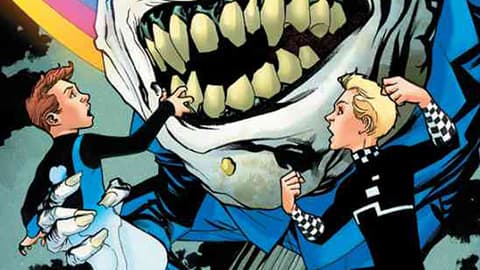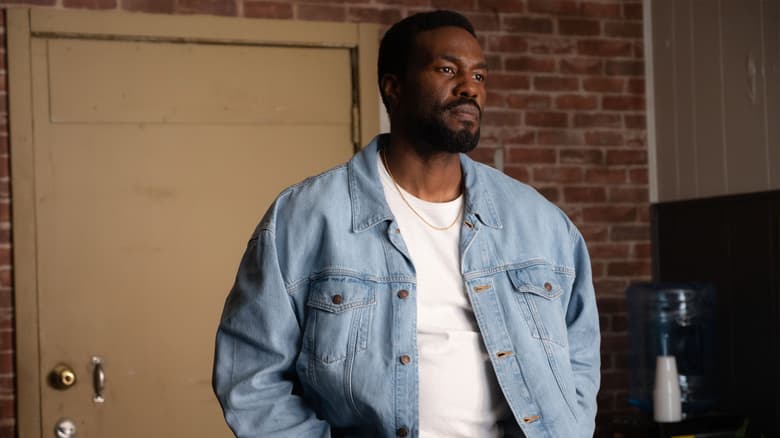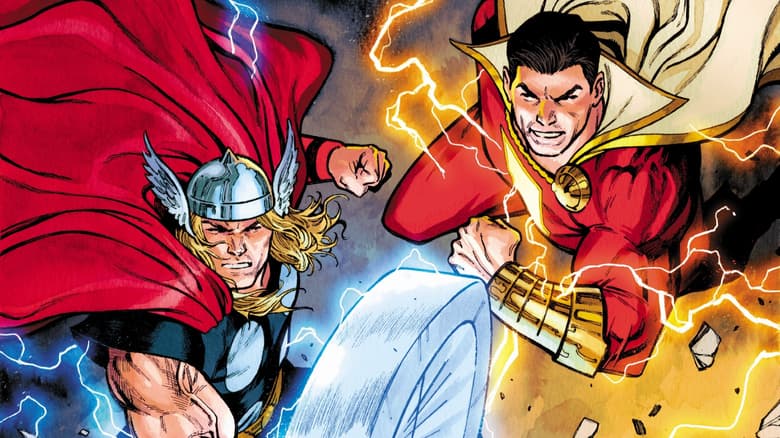Power Pack’s Return Bridges the Past and Present
Devin Grayson on what to expect from POWER PACK #63.

Twenty-six years ago, POWER PACK #62 hit shelves and with it came the end of a current continuity title for the Power siblings. This November 1, writer Devin Grayson and artist Marika Cresta seek to right that wrong by bring the family back in POWER PACK #63.
Grayson spoke to us about the exhilaration of taking on the dormant book and bringing a personal favorite back to self-titled life.
Marvel.com: In other interviews, you have spoken about your admiration for POWER PACK creator Louise Simonson. How was it to walk in her footsteps by taking on the team/family that is so closely associated with her?
Devin Grayson: In mainstream superhero comics, we’re very often working with characters we didn’t create. It’s something you get used to, to some extent, but the debt you owe the people who came before you never leaves your mind.
In some ways, it’s easiest when a lot of people’s work has preceded yours; those enduring, pop-culture-saturating characters start to feel like communal property and you can be pretty confident that nothing you do could really hurt them in any lasting way. It’s a little different, though, when you’re working with characters whose points of origin are very clearly connected to specific living people you venerate. That makes me feel a kind of protectiveness toward them, like if I get something wrong, I’m letting down not just the fans, but also, in this case, Louise Simonson and June Brigman, these two women I so admire.
With a group of young characters like Power Pack, the babysitting metaphor starts to feel irresistible, so let’s go with that. I suppose I feel like my job here is to keep the kids safe for a period of time while also taking them on an adventure. Sticking with that metaphor, it’s less paralyzing than you might expect because women taking care of one another’s children is a sort of a time-honored tradition that is always appreciated and reciprocated.
tl/dr: I’m thrilled and honored and promise to take good care of them!
Marvel.com: Beyond Simonson, how much did other series writers like Jon Bogdanove and Michael Higgens play into your conceptualization of the Pack?
Devin Grayson: My approach to working with existing characters is to read absolutely everything I can get my hands on and assume—to whatever extent such assumptions don’t contradict any editorial edicts I may be working under—that all of those stories happened, or at least that someone in the characters’ orbit believes that they did. That forces me to account for all of it, which I think gets the stories closest to the complexity of real life.
In this particular script, Jon Bogdanove’s work is specifically referenced in flashback, as is—briefly—a story by Marcus McLaurin.
Marvel.com: While the Pack has appeared together in other books since POWER PACK #62 in 1991 and have popped up as individuals as well in other places, this is the first “true” in-continuity POWER PACK book since there. As a writer, how did you go about capturing the feeling that time had passed, acknowledging changes, and still delivering a book that is distinctly a POWER PACK book, not just a book with the Power Pack?
Devin Grayson: The whole story is really about time having passed, and when you see Katie on page one, it will be hard to miss that she’s not five anymore.
As you probably know, though, the team isn’t fully together at this point in time, and you’re right—that could easily have made it not a POWER PACK book. So my solution to that was to use some flashbacks, both to revisit a classic Power Pack story and to tell a new one. My hope is that the story expresses what the team was while also commenting on their current status and setting them up to potentially move into an exciting new future.

Marvel.com: Speaking of the above, what is the essence of the team/family, in your opinion? What’s the key to getting them “right” as a unit? As individuals?
Devin Grayson: I’ve always felt that there was a genuine, optimistic spirit of noblesse oblige animating POWER PACK. These are smart, educated kids from a close-knit, loving family that explicitly endorses both art and science. I don’t think it’s an accident that their parents aren’t bankers or CEOs. From issue one we see the kids being encouraged to pursue individual interests: Alex is building a telescope, Julie’s reading while washing the dishes (and, I mean, if that doesn’t instantly tell you tons about her, I don’t know how to help you), Jack’s listening—with a great deal of enthusiasm—to a ball game on the radio (while allegedly drying said dishes), and Katie’s pressed against the French doors leading out to the back porch sky-watching. They bicker as much as you’d expect siblings to bicker but also elect to camp outside together the moment that becomes a possibility. Later, when they meet Whitey, he tells them how taken he is with Earth’s literature. The Power family is engaged with the world around them, and even before becoming superheroes, the kids show bravery and determination, as well as a clearly articulated sense of how important it is to help others.
I also think it’s significant that the four siblings are sharing one alien’s powers among them. That’s such a lovely metaphor for family; as powerful as you may be, you can always achieve more if you’re working in tandem with a supportive unit. And I suspect that once you know that—really know it in your bones—the absence of that unit could feel very challenging.
Marvel.com: In talking to other one-shot creators, one of the things that has come up a lot is the challenge of focusing enough to deliver a complete single story when there is all that continuity and distinct encounters that you are tempted to include. How did you navigate those kinds of desires and balance the complete story with hinting at the bigger history?
Devin Grayson: Yeah, I sympathize with my colleagues there. With Power Pack specifically, there was a great temptation to use guest stars. The kids had many team adventures, and the Marvel Universe is bursting with characters I’d love to write and that I know fans would love to read more about. But with twenty pages to work with, I decided my best bet was to focus in on one member of the family and let her touch on the over-arching history of the team while giving readers as much information as I could about what’s going on currently in her daily and interior life.
One of the unique pleasures of comics is that back history is usually readily available. The best, most interesting characters always have tons of fascinating adventures behind them, it’s just that with comics and other forms of serialized story-telling, readers have the chance to go back and engage with that material directly. Which is a long-winded way of saying, I also don’t mind if this story leaves readers wanting more.
Marvel.com: How does Marika Cresta work as an artist help you get in the proper mindset with this story? How did she help you develop and nail the tone you were looking for?
Devin Grayson: Marika is remarkably talented and was such a joy to work with! Looking at samples from her, one of the things I knew I could really rely on is her ability to tell stories with expressions and body language. The acting in the issue is just phenomenal. Some artists will look at you funny if you ask them to show that a character is disengaged through how they’re sitting, but Marika understands how we live in and communicate with our bodies. Little details like the heel of a shoe being off the floor…that may seem inconsequential, but it’s the kind of body language psychologists and criminologists use to identify when people are uncomfortable or lying. I also wanted the issue to balance superhero action with quieter, more intimate moments, and Marika absolutely nailed that rhythm. Her strength as an artist allowed me to use a few story-telling elements unique to the medium of comics so that, to go back to one of your earlier questions, it’s not just a POWER PACK comic, it’s a POWER PACK COMIC.
And honestly, the whole team was amazing. There are a couple of pages that have to convey a dual perspective on narrative captions, and I had a thought about how to use color to potentially make that clearer, but I felt like it would be a lot to ask of the colorist. I mentioned it to the editor, Sarah Brunstad, just in case she thought it was worth bringing to his attention, and she sent me back the page in question. It was already colored, and the brilliant Chris O’Halloran had done exactly what I was thinking, down to using the specific colors I’d casually thrown out as examples. It was one of those thrilling moments when you just know your whole team is on the same wavelength, and everyone’s bringing their A game.
Marvel.com: Speaking to new readers and longtime fans, why is POWER PACK #63 a book not to be missed?
Devin Grayson: We’ve got a crazy supervillain, a teenage superhero, and family feels. Plus, as you said, this issue is the first official, in-continuity Power Pack comic in over twenty years. It’s also my first comic work for Marvel in over five years, and Marika’s first comic work for Marvel ever (and trust me, you want to get in on the ground floor with her—she’s goin’ places!). Also: Chris O’Halloran, who totally makes the whole thing pop.
All that said, the four best reasons not to miss this are and will always be: Alex, Julie, Jack and Katie Power.
The Daily Bugle
Can’t-miss news and updates from across the Marvel Universe!




